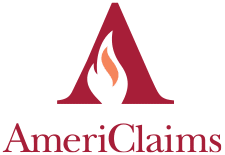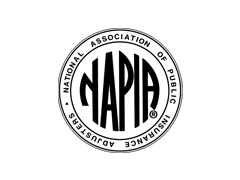What’s the Difference Between Total & Partial Loss Claims?
Dealing with insurance claims can be a stressful process, but if your property has been severely damaged, you have little choice but to seek compensation through your insurer. Your homeowner’s insurance is designed to help you make repairs and get your property back to its previous condition.
How badly was your property damaged, though? Will you need to file a partial loss or a total loss claim? Let’s take a closer look at the differences between the two—knowing how severe the damage is can help you decide whether to hire a public adjuster for assistance.
The public adjusters at Americlaims have years of experience dealing with both total and partial loss claims. Public adjusting services can be of great help to you when dealing with complex insurance claims and unsatisfactory settlement offers.
Partial Loss Claims Defined
If the damage to your property is a partial loss, that means that the cost to repair it is less than the actual cash value (ACV) of the property. For example, if the ACV of your single-story cabin is $30,000 and it will cost $15,000 to repair damage from a kitchen fire, insurance deems it a partial loss.
Your insurance company’s claims adjuster may visit your property to inspect the damage and estimate repair costs. They’ll offer you an estimate for your settlement, and if you accept it, you can begin repairs right away. For instance, many smoke damage insurance claims in North Carolina are categorized as partial losses, as plenty of smoke-damaged items can be cleaned without requiring replacement.
However, if you are unsatisfied with the settlement your insurance company offers you, consider hiring a public adjuster on your own. The public adjuster will go through a similar process in evaluating the damage to your property, but they’ll take extra time to ensure that the compensation you receive is fair.
Total Loss Claims Defined
You have probably heard the term “total loss” as it applies to cars. When a car is totaled, that means it’ll cost more money to repair it than the car is worth. The same principle applies to other types of property, like homes and brick-and-mortar business locations.
If the damage to your property constitutes a total loss, that means that the repair costs are equal to or greater than the ACV of the property. Should your insurance company’s claims adjuster deem the property a total loss, they may offer you a settlement equal to the ACV of your property.
But again, if you feel that the check isn’t sufficient to cover your losses, consult with a public adjuster and have them inspect your property as well.
Active vs. Constructive Total Loss: A Subtle Distinction
If your property is designated as a total loss, that means you’ll need to rebuild your home or purchase a new one. Total loss can take a couple of different forms in the insurance industry; let’s take a look at the subtle differences between an active and a constructive total loss.
Active Total Loss
If your insurance company deems your property to be an active total loss, that means that it’s lost its identity and specific character. A home or business that is categorized this way must be damaged so severely that it can no longer be categorized as a building.
In practice, a property deemed an active total loss is damaged so badly that no reasonable person would try to repair it. Real-world examples of active total losses include homes that have burned down to the ground and businesses that were situated in the direct path of a hurricane.
Constructive Total Loss
Sometimes, properties that are chalked up as total losses don’t actually look that damaged on the outside. It may still look like a building, and some walls and ceilings may even be intact. However, if local building ordinances and construction codes prevent the property owner from making repairs, the insurer may call it a constructive total loss. This is often done when it would be outright dangerous to attempt repairs on the property.
A common example of a constructive total loss is a home that had a fire break out on the main floor. The cost to repair the damage itself may be substantially less than the ACV of the property. But if the fire has compromised the structural integrity of the building and rendered it unsafe to inhabit even by construction workers, your county may condemn it for demolition.
Active and constructive total losses are handled similarly by insurance agents and adjusters because the end result is the same—you cannot rebuild your property. The main difference is that with a constructive total loss, the government is prohibiting you from rebuilding due to safety concerns.
How Do I Know if My Property Loss Is Partial or Total?
When you’re ready to file your property insurance claim, you may not know on your own whether the damage constitutes a partial or total loss. Some partial losses look severe at first glance, and some constructive total losses don’t look that bad to the untrained eye.
This is where the services of a public adjuster can prove useful to you. Your insurance company will likely send a claims adjuster to assess your property damage, but remember, they work for your insurer and want you to accept a minimal settlement. A public adjuster’s loyalties lie with you, and because they will be paid a percentage of your settlement, they’ll work to increase that amount for you.
If your property has been seriously damaged by circumstances beyond your control, don’t delay in starting the insurance claim process. You don’t have to go through this experience alone. A public adjuster can provide valuable guidance and negotiation services as you seek fair compensation.
As you begin to file your claim, remember the differences between total and partial loss claims. Don’t go through the process alone; trust the expertise of a public adjuster when it comes to rebuilding your life. They will do everything in their power to ensure you are compensated fairly and can start anew with minimal difficulty.









